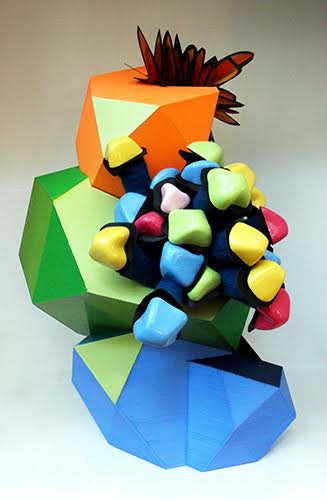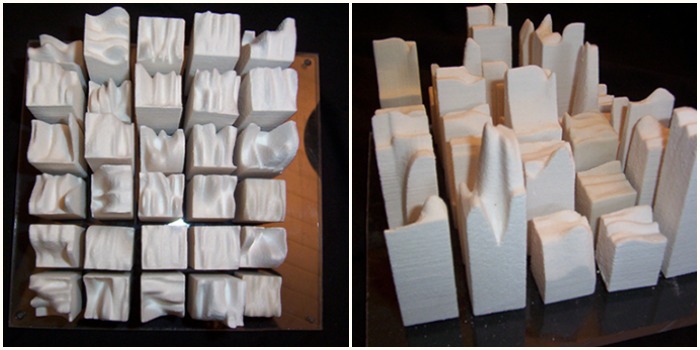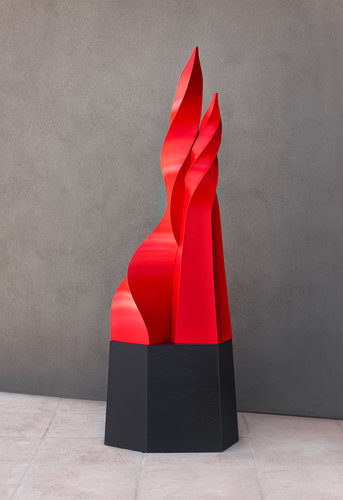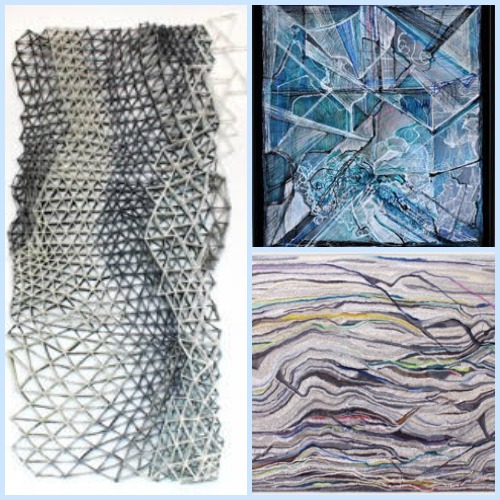Artists in a wide variety of mediums are embracing 3D printing and digital fabrication.

Why do artists use 3D printing technology? What does it add to the creative process, and the result? We asked several artists to share their concept and techniques.
Leisa Rich
It is a logical progression for an experimental artist such as I to be 3D printing. I have a passion to explore new tools, materials, and ideas, and manipulate them in ways they were not intended for. I am not interested in using 3D printing solely, but rather, to enhance and work alongside other materials and techniques — incorporating fiber skills and materials, resins, mixed media and more — into pieces that are a hybrid, melding high-brow and low-brow art. Also, as I have aged as an artist, and therefore have carpal tunnel and arthritis from repetitive tasks I can realize new visions, going forward, that require less handwork.

Sandra Canning
I collaborated with a team of innovative engineers to 3D print 3D models I made of my photographs. This type of 2D to 3D conversion is often referred to as “3D printed lithophanes.” Lithophanes were popular in the 1800’s and have been revived by the 3D printing community. A lithophane is a picture that has been etched into a translucent material, but the image is only revealed when back-lit.
The software that generates the 3D model or height map calculates based on the gray scale values of the image. Darker areas are thicker in height and lighter areas are thinner to allow more light to pass through. My 3D printing adventures have increased my creative vocabulary and inspired me to venture into 3D scanning and jewelry making.

Elvira Dayel
The experience of creating sculpture digitally is quite different from any physical interaction with the material. Being in the virtual world of 3D software presents the artist with endless possibilities where there are no material limitations. Innovation through information modeling is exciting. The additive process of 3D printing manufacturing is provocative because things are literally made out dust (powder); material used in the process is called nylon, or polyamid; it is, philosophically speaking, mesmerizing, and every time I think or discuss this with other artists or collectors, it brings a smile to my face and theirs. It is still a very experimental field. I use Shapeways for all my 3D printing.
Drawing is my medium of choice and I regard digitally generated sculpture to be in the same realm as hand drawing. Philosophically they are both drawings and done by hand where one is immediate, and the other is facilitated through the intermediary medium of the digital modeling software. Technically they are both powder-based. Historically I am bringing them closer together every time I make more work and explore their relationship.

Kevin Caron
In addition to using 3D printing to create original sculpture, I also use it for prototyping – will a design stand up? Is it proportional? etc. I save many hours creating works out of metal as well as larger versions of 3D-printed sculptures this way. Because I can create forms in CAD (the software I use to create my sculptures) that are not possible in metal, my usual medium, 3D printing has deeply influenced my work. Lately, I’ve also been enjoying patinating and painting my 3D-printed sculptures as well as working in bronze. It’s definitely opened new worlds for me as an artist.

Rachel Goldsmith
I use repetitive movements to compose my artwork in different media—ink, acrylic, and PLA plastic extruded through the 3Doodler, a 3D printing pen. My process is similar to traditional 3D printers that build a form using repetitive movements but in my case my brain is the computer and my use of repetition is visible in my final composition.
I have developed a vast repertoire of techniques that I use in my “painting with plastic” (#PaintingWithPlastic) each of which I combine in different ways to create final pieces, many of which involve reheating the extruded plastic with an iron, a heat-gun, or a very hot oven. When I begin each piece I am fueled by a combination of these processes, not by a desired final composition. My designs therefore emerge from each technical discovery.
Want to stay current on cutting edge business articles from Artsy Shark, plus artist features, and an invitation to the next Call for Artists? Click below to sign up for our twice-monthly email. You’ll get all this plus opportunities and special offers that you can’t get anywhere else!



Thanks for sharing these various perspectives! It’s interesting to see the variety of ways different artists are using 3D printing in these still very early days.
I agree, Mary. With technology moving so fast, this process will be an “everyday” activity before long. I love seeing what artists on the forward edge are doing with it!
What type of 3D set up should an artist get just starting out in this new medium?